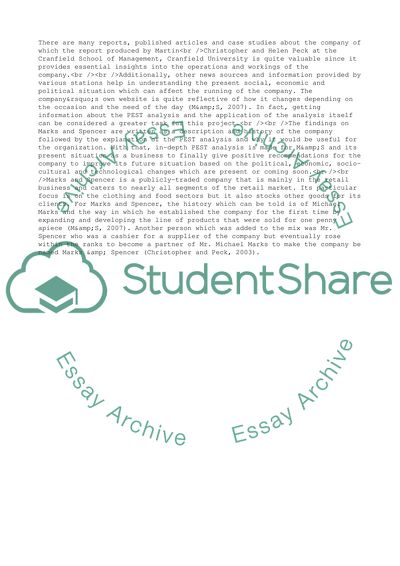Cite this document
(PEST Analysis of Marks & Spencer Case Study Example | Topics and Well Written Essays - 3000 words, n.d.)
PEST Analysis of Marks & Spencer Case Study Example | Topics and Well Written Essays - 3000 words. https://studentshare.org/business/1706701-assessment-4-pest-analysis
PEST Analysis of Marks & Spencer Case Study Example | Topics and Well Written Essays - 3000 words. https://studentshare.org/business/1706701-assessment-4-pest-analysis
(PEST Analysis of Marks & Spencer Case Study Example | Topics and Well Written Essays - 3000 Words)
PEST Analysis of Marks & Spencer Case Study Example | Topics and Well Written Essays - 3000 Words. https://studentshare.org/business/1706701-assessment-4-pest-analysis.
PEST Analysis of Marks & Spencer Case Study Example | Topics and Well Written Essays - 3000 Words. https://studentshare.org/business/1706701-assessment-4-pest-analysis.
“PEST Analysis of Marks & Spencer Case Study Example | Topics and Well Written Essays - 3000 Words”. https://studentshare.org/business/1706701-assessment-4-pest-analysis.


